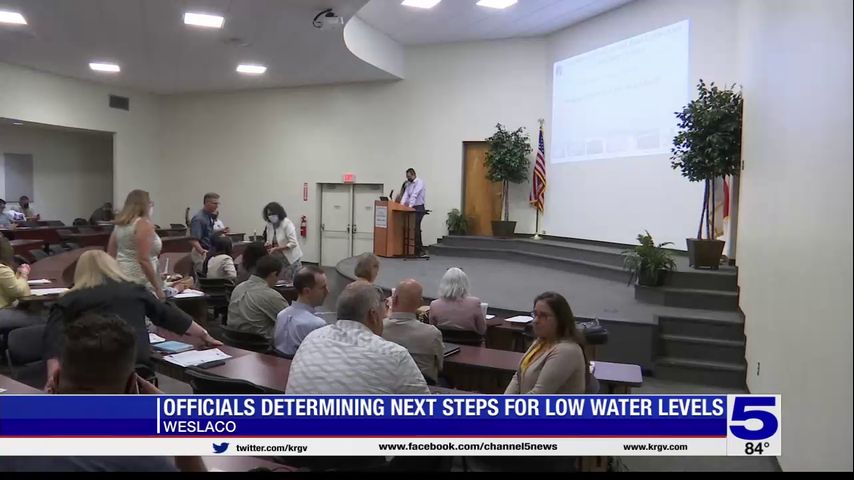Federal, state officials determining next steps for low water levels at Falcon, Amistad reservoirs
Federal, state and local leaders met in Weslaco on Wednesday to discuss dwindling water levels at the two reservoirs that provide the Rio Grande Valley with water.
In the spring, the Valley tapped into water reserves.
“What’s on everyone’s radar right now is in the water month of June, we tapped into that operational reserve by almost 55,000,” said Anthony Stambaugh, a TCEQ employee and the Rio Grande Watermaster.
READ ALSO: Water shortage means fewer visitors at Falcon State Park
The U.S. Department of Agriculture and U.S. Department of Interior are asking local entities to apply to programs for funding that could help make local water systems more efficient.
The International Boundary and Water Commission, a federal agency that oversees the two reservoirs, is counting what's left at the reservoirs, but with a relatively small $50 million budget.
“Obviously we’re going to have to build technical capabilities within our organization,” said IBWC Commissioner Maria-Elena Giner.
The newest number on how much water is left, or the combined capacity at Falcon and Amistad dams, still hasn’t been updated since the first week of July, when it was just over 25 percent.
Combined capacity the is the main variable in municipal water conservation plans. The TCEQ requires cities to have those "drought contingency plans," but each one is tailored differently. Several water planners warned that dropping below 25 percent combined capacity would likely trigger changes in many conservation plans.
READ ALSO: Car washes may be first businesses hit by water shortage restrictions
“We want to make sure we do a good job of accounting for the water that’s in there,” Giner said. “So, right now, we’re doing a survey of the lake because we want to verify the depth, as well as the elevation of the spillway. This is something we’re going to be resolving within this week and we’ll be putting out the report right after that.”
The Texas Commission on Environmental Quality is a state agency that requires cities to have a drought contingency plan for when water levels go down.
“A lot of the entities in Texas who are pulling out and brushing off the drought conservation plan that they provided to us, and have to update on a five-year basis, at least, many may be unfortunately finding where they didn’t put as much time into the planning difficult decisions before them in drafting a plan,” said TCEQ Commissioner Bobby Janecka. “Those tough questions are still waiting to be answered today.”
READ ALSO: Cameron County drought contingency plan impacting farmers
Now, officials are managing what's left of the remaining water and the extra water it takes to push it downriver to cities.
“Some of these municipalities rely on the irrigation districts to essentially carry that water to them,” Stambaugh said.
Going forward, many decisions will be left up to Stambaugh, Janecka said.
“Our agency rules present him some opportunities to make judgment calls in those dire situations of drought and scarcity and I’m confident that they have the ability to prioritize those urgent emergency situations,” Janecka said. “It’s an authority that we infrequently use and all public attention will light up the second we really consider it.”




